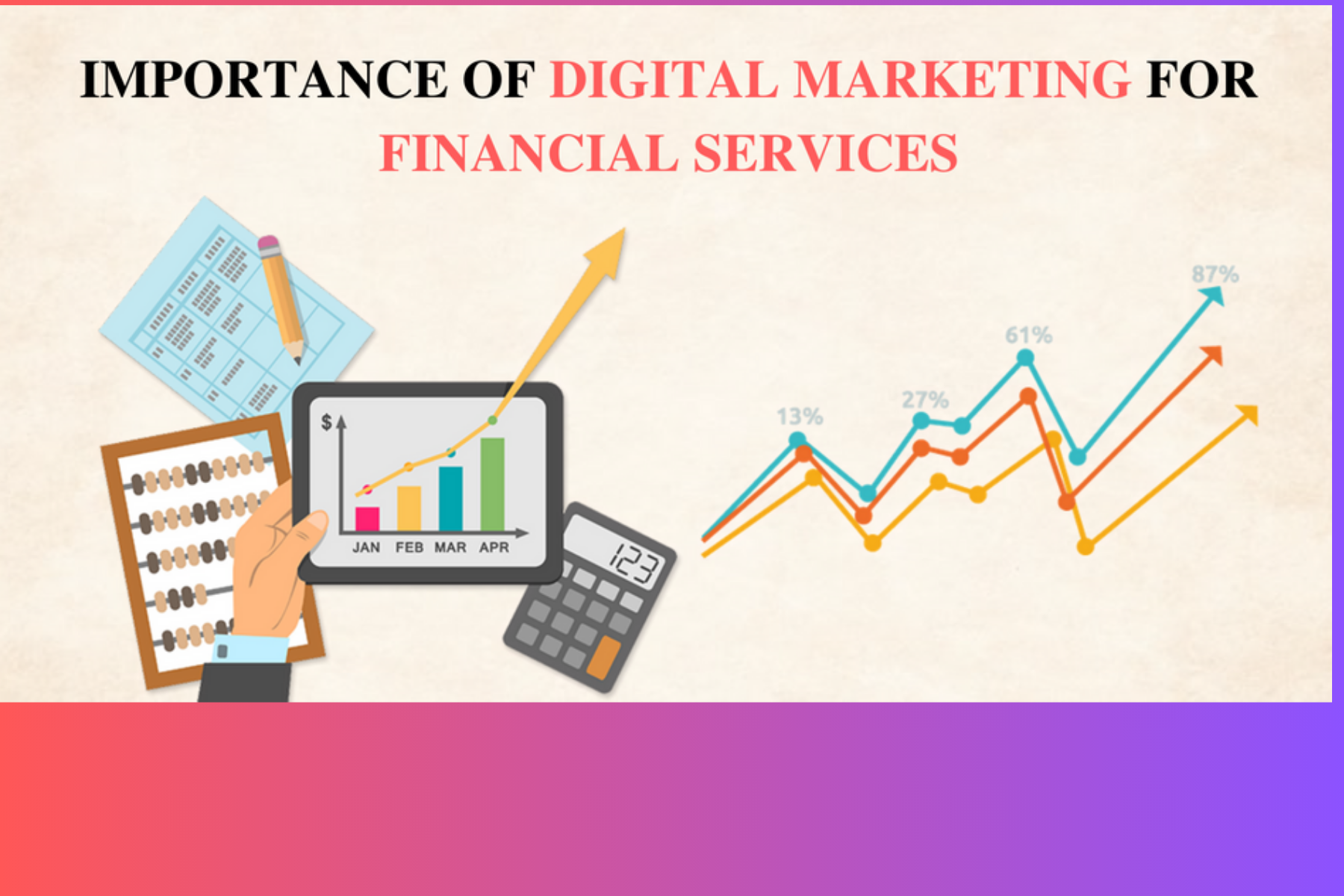
Digital Financial Service Importance
Digital Financial Service Digital financial services (DFS) represent a paradigm shift in how people and organizations manage, access, and interact with financial resources. These services use technology to supply financial products and services through digital platforms, allowing customers to perform transactions, access credit, invest, and manage their accounts from anywhere. The introduction of digital financial services has transformed the global financial environment, notably by providing more inclusive financial options to underbanked and unbanked people. This essay examines the key characteristics of DFS, including their impact on financial inclusion, technological advancements, regulatory obstacles, and future prospects. Digital financial services encompass a wide range of financial services delivered via digital channels, notably through mobile devices, computers, and the internet. These services include digital banking, mobile money, payment solutions, insurance, investments, credit, and savings all offered electronically. DFS has grown beyond traditional banking institutions to include fintech businesses, telecoms providers, and other third-party participants who provide novel financial interaction platforms. Examples of digital financial services include: Mobile Money: One of the most well-known kinds of DFS, mobile money allows users to keep money in a mobile wallet, transfer money, and pay for goods and services using mobile phones. Traditional banks have embraced technology by providing online banking services, which allow users to manage their accounts, pay bills, and apply for financial products without having to visit a branch. Digital lending platforms make loans to people and businesses using automated credit scoring systems. Digital Payments: Services that allow for electronic payments such as peer-to-peer (P2P) transfers, bill payments, and e-commerce transactions. Digital investments include technology-driven investing platforms, robo-advisors, and mutual fund applications that enable customers to invest digitally. Evolution of Digital Financial Services Rapid technical improvements, shifting customer preferences, and an increasing demand for financial inclusion have all contributed to the evolution of DFS. Financial services firms may now reach customers in remote and underserved locations because of technological breakthroughs in mobile connection, cloud computing, blockchain, and artificial intelligence (AI). The introduction of smartphones and mobile apps has boosted DFS acceptance by allowing consumers to access financial services on demand, regardless of their local The fintech revolution has played an important part in this development. Fintech startups have disrupted traditional financial institutions by providing customer-centric, innovative solutions that are typically speedier and less expensive. Fintech companies have transformed credit risk assessment, payment processing, and financial product design by leveraging big data, AI, and machine learning. Consumer behavior has also moved toward increased digital interactions. People want rapid, convenient, and seamless financial experiences, which drives financial institutions to digitize their offerings. The COVID-19 pandemic hastened this trend, as many individuals and businesses have turned to digital channels to perform financial transactions amidst lockdowns and social distancing measures. Financial Inclusion and Digital Financial Services: Large portions of the world's population, particularly in developing nations, have historically had limited or no access to formal banking services because of a variety of obstacles, including high costs, a lack of infrastructure, and geographic restrictions. DFS has helped close this gap by offering scalable, easily accessible financial solutions. Key Contributions to Financial Inclusion Obtaining Access to Essential Financial Services: Digital wallets and mobile money have made it possible for those without bank accounts to safely store and transfer money. Mobile money, which offers services like payments, savings, and even credit, has supplanted banks as the main method of financial interaction in areas where banks are few. Microfinance and Credit Access: DFS platforms have opened new routes for microloans and small business financing. Digital lending platforms make it possible for those without official credit histories to apply for loans by evaluating creditworthiness using alternative data sources like social media activity or mobile phone usage. Encouraging Women and Rural areas: Traditionally, institutional financial systems have ignored women and rural areas. By providing simple-to-use financial solutions that are mobile-friendly, DFS has given them additional avenues to engage with the economy. Lowering Transaction expenses: DFS lowers the operational expenses of delivering financial services by doing away with the requirement for physical branches. This reduction in cost translates into lower costs for customers, making financial services more affordable for low-income persons. Digital Financial Services are Driven by Technological Innovations The growth and development of DFS have been fueled by several technological advances, including: a. Connectivity and Mobile Technology Especially in developing nations, mobile phones are now the main method of accessing DFS. Mobile money services, which allow users to conduct financial transactions without a bank account, are provided by mobile network operators (MNOs) in collaboration with fintech companies. In nations where the majority of people own mobile phones but do not have access to traditional banking infrastructure, this has completely changed financial access. b. Machine learning and artificial intelligence AI and machine learning are being used extensively in digital financial services for tasks such as credit scoring, fraud detection, personalized recommendations, and customer support. These technologies enable more precise risk evaluations and provide individuals and businesses with customized financial solutions by analyzing vast volumes of data in real-time. c. Digital Money and Blockchain Technology The advent of blockchain technology has created new avenues for safe, decentralized finance transactions. By offering a new kind of digital asset, cryptocurrencies like Bitcoin and Ethereum, which run on blockchain technology, have put the established financial system under pressure. Furthermore, by minimizing the need for middlemen and consequently cutting transaction costs, blockchain holds the potential to simplify procedures like international transfers d. Cloud-Based Software Financial services that are hosted on the cloud give customers and suppliers with flexibility, security, and scalability. Financial institutions can manage sizable datasets, guarantee business continuity, and create cutting-edge services with cloud computing—all without having to make sizable investments in physical infrastructure. e. Verification using Biometrics Security has elevated to the top of DFS's priorities due to the increase in digital fraud. The utilization of biometric identification techniques, such facial recognition and fingerprint scanning, is on the rise in order to guarantee safe entry to digital financial services. This is especially helpful in places where people do not have official identification documents. Difficulties in Online Banking Although DFS has several advantages, the sector must overcome a number of obstacles in order to fully realize these benefits: Threats to Cybersecurity DFS is vulnerable to cybersecurity issues such as fraud, identity theft, and hacking because of its digital nature. To safeguard user information and stop financial losses from cyberattacks, financial institutions need to make significant investments in strong security measures. Regulatory Difficulties In the DFS sector, regulations can lag behind advances in technology. It takes careful balancing to make sure digital financial services adhere to local, state, federal, and international regulations without impeding innovation. Comprehensive and unified regulatory frameworks are also needed for issues like data protection, digital currencies, and cross-border payments. Knowledge of Digital Media Lack of digital literacy is a barrier to DFS adoption for many potential users, especially in developing nations. People might not know how to use digital platforms or they might be concerned about the safety of transactions made online. To increase DFS's reach, outreach and education initiatives aimed at raising digital literacy are essential. Infrastructure and Connectivity Even while financial services are now easier to access thanks to mobile technology, many rural communities still lack the infrastructure needed to provide reliable internet and mobile connectivity. Widespread DFS implementation depends on closing these infrastructure gaps. Digital Financial Services' Future DFS appears to have a bright future ahead of it, with more innovation and growth planned in the upcoming years. Major developments that could influence DFS in the future include: The Super App Revolution Super apps like WeChat have combined a number of services, including financial services, onto a single platform in markets like China. Fintech businesses are predicted to continue to expand globally in this trend, providing all-inclusive solutions that integrate loans, investments, savings, and payments into a single app. Finance Embedded The integration of financial services into non-financial systems is known as embedded finance. E-commerce platforms, for instance, might directly provide loans, insurance, and payment methods on their websites or applications. This smooth incorporation of money into daily tasks will probably result in Financial Decentralization (DeFi) DeFi, a financial service powered by blockchain technology, seeks to provide transparent, permissionless, open-source financial services without the need for conventional financial middlemen. Because DeFi provides decentralized lending, borrowing, and trading services, it has the potential to upend established banking systems. Inclusion of Finances By means of Digital ID By giving people a verifiable identity that is required to access DFS, digital identity verification systems—like India's Aadhaar—are playing a critical role in promoting financial inclusion. The global rollout of digital identity systems will probably expand financial services' reach even more. In summary As they promote financial inclusion, innovation, and economic progress, digital financial services have emerged as a key component of contemporary finance. Through the use of blockchain, AI, mobile technology, and other technical advancements, DFS has improved the efficiency, affordability, and accessibility of financial services. To guarantee that the advantages of DFS are felt globally, however, issues like cybersecurity threats, legal barriers, and low digital literacy must be resolved. With continued development, digital financial services have the power to revolutionize not only the financial sector but also economies and society around the globe by promoting greater financial inclusion and individual empowerment.
